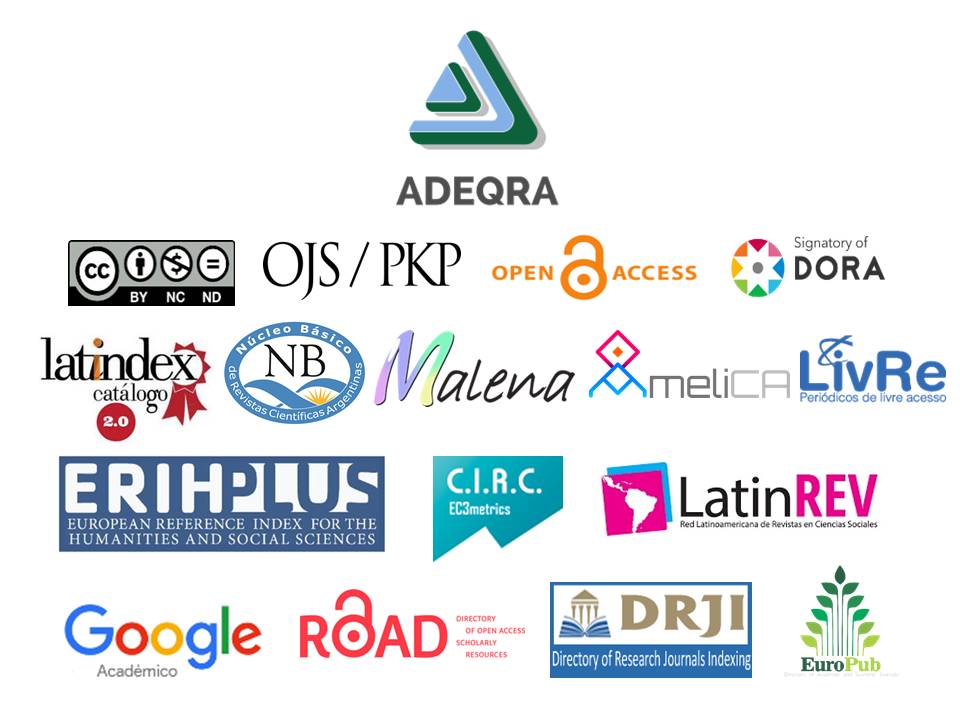Visual representations in Chemistry curriculum. A look from the pandemic.
Keywords:
Visual representations, Curriculum, Chemistry, PandemicAbstract
The importance of graphicacy is highlighted by the pandemic in order to understand the visual resources that are broadcasted in the media. Such as a contribution from Chemistry education, several Chemistry contents are presented here to be approached from the problem of the pandemic with graphical representations. This article presents an exploratory and descriptive study about the curricular guidelines of the Nueva Escuela Secundaria (New Secondary School) of Ciudad Autónoma Buenos Aires for the teaching of and with graphical representations in Chemistry. The results showed an increase of the levels of the information processing contained in the representations while the instruction progresses, from an explicit and implicit information processing to the conceptual one. At last, some activities about the preparation of alcoholic disinfectant solutions, considering the curricular recommendations regarding the use of graphic representations are proposed.
References
Artola, E., Mayoral, L. y Benarroch, A. (2016). Dificultades de aprendizaje de las representaciones gráficas cartesianas asociadas a biología de poblaciones en estudiantes de educación secundaria. Un estudio semiótico. Revista Eureka sobre Enseñanza y Divulgación de las Ciencias, 13(1), 36–52. https://revistas.uca.es/index.php/eureka/article/view/2951
Diseño Curricular para la Nueva Escuela Secundaria. Formación general del Ciclo Orientado del Bachillerato. Ciudad de Buenos Aires, agosto de 2015. https://www.buenosaires.gob.ar/sites/gcaba/files/nes-co-formacion-general_w_0.pdf
García García, J. J. (2005). El uso y volumen de información en las representaciones gráficas cartesianas presentadas en los libros de texto de ciencias experimentales. Enseñanza de las Ciencias, 23(2), 181–200. https://www.raco.cat/index.php/Ensenanza/article/view/22017
Gómez Llombart, V. y Gaviria Catalán, V. (2015). Describir y dibujar en ciencias. La importancia del dibujo en las representaciones mentales del alumnado. Revista Eureka sobre Enseñanza y Divulgación de las Ciencias, 12(3), 441–455. https://revistas.uca.es/index.php/eureka/article/view/2934
Grilli, J., Laxague M. y Barboza, L. (2015). Dibujo, fotografía y Biología. Construir ciencia con y a partir de la imagen. Revista Eureka sobre Enseñanza y Divulgación de las Ciencias, 12(1), 91–108. https://revistas.uca.es/index.php/eureka/article/view/2904
Idoyaga, I. y Lorenzo, G. (2019). Las representaciones gráficas en la enseñanza y el aprendizaje de la física en la universidad (Tesis doctoral). Facultad de Farmacia y Bioquímica, Universidad de Buenos Aires, Argentina.
Idoyaga, I., Moya, N. y Lorenzo, G. (2020). Los gráficos y la pandemia. Reflexiones para la educación científica en tiempos de incertidumbre. Revista Educación en Ciencias Biológicas, 5(1), 1-18. https://doi.org/10.36861/RECB.5.1.1
Lorenzo, M. G. y Pozo, J. I. (2010). La representación gráfica de la estructura espacial de las moléculas: Eligiendo entre múltiples sistemas de notación. Cultura y Educación, 22(2), 231–246. https://doi.org/10.1174/113564010791304555
Postigo, Y. y Pozo, J. I. (2000). Cuando una gráfica vale más que 1.000 datos: la interpretación de gráficas por alumnos adolescentes. Infancia y Aprendizaje, 23(90), 89–110. https://doi.org/10.1174/021037000760087982
Pozo, J. I. (2001) Humana mente. El mundo, la conciencia y la carne, Madrid: Morata.
Pozo, J. I. [CIAEC FFyB]. (2020, 08 de Junio). Enseñar ciencias experimentales en tiempos de pandemia. 3er Encuentro Seminarios del CIAEC. [Archivo de video]. https://www.youtube.com/watch?v=oAfOgJ1ENck
Published
How to Cite
Issue
Section
License
Copyright (c) 2021 Michelle Marilyn Alvarez, Vanesa García, Ignacio Idoyaga, María Gabriela Lorenzo

This work is licensed under a Creative Commons Attribution-NonCommercial-NoDerivatives 4.0 International License.



